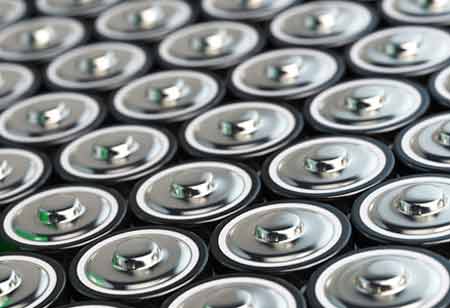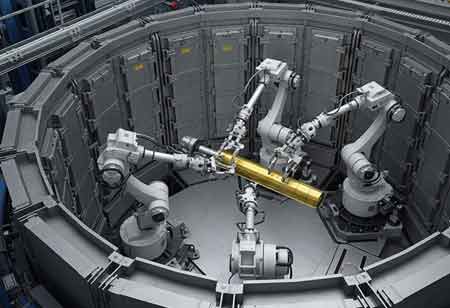CLOSE
Specials
I agree We use cookies on this website to enhance your user experience. By clicking any link on this page you are giving your consent for us to set cookies. More info
Be first to read the latest tech news, Industry Leader's Insights, and CIO interviews of medium and large enterprises exclusively from Energy Tech Review
Thank you for Subscribing
Driving Change: The Evolution of Lithium-Ion Cathodes for a Sustainable Future
The lithium-ion battery sector, a critical facilitator of the shift to renewable energy and electric vehicles (EVs), has made remarkable advances, notably in cathode materials.

By
Energy Tech Review | Monday, February 17, 2025
Stay ahead of the industry with exclusive feature stories on the top companies, expert insights and the latest news delivered straight to your inbox. Subscribe today.
The lithium-ion battery sector, a critical facilitator of the shift to renewable energy and electric vehicles (EVs), has made remarkable advances, notably in cathode materials. Battery performance mainly depends on lithium-ion cathodes, and current trends show that the industry is seeing substantial innovation and expansion. Businesses in the cathode material market are using innovative techniques to address the growing demand for more effective, durable, and ecologically friendly batteries.
The emphasis on sustainability is one of the most significant developments in the market for lithium-ion cathode materials. Businesses are concentrating more on lowering the carbon footprint of their products as environmental concerns increase. There is growing pressure on the lithium-ion battery industry to reduce its ecological effect across its lifespan, from extraction and manufacture to recycling and end-of-life disposal, in addition to meeting performance requirements. As a result, producers of cathode materials are looking more closely at sustainable sources for raw materials, cutting back on harmful ingredients in their goods, and improving recycling procedures. Newer, more sustainable cathodes are being developed due to the move toward using less hazardous and more plentiful materials like nickel and manganese.
For manufacturers, developments in battery recycling will provide significant potential. Businesses that can develop effective, affordable techniques for extracting valuable components from spent batteries will have a competitive edge as the need for sustainable practices grows. The next generation of cathode materials that could be recycled into new batteries is being driven by advancements in hydrometallurgical processes, direct recycling methods, and closed-loop recycling systems. By ensuring a more sustainable supply of essential minerals, these developments will lessen the environmental effect of battery manufacturing.
The industry's top priority is performance improvement. Cathode materials with higher energy densities, longer life cycles, and quicker charging times are becoming increasingly necessary as the market for energy storage devices and EVs expands. Researchers and producers are creating more effective nickel-cobalt-aluminum (NCA) and nickel-cobalt-manganese (NCM) based cathodes that balance longevity, performance, and cost in response to these demands. High-performance batteries are necessary for grid stability and energy storage systems. Thus, these advancements are essential for the success of electric vehicles and the ongoing growth of renewable energy storage solutions.
Another notable trend is the growing incorporation of digital technology and data-driven insights into material creation. Artificial intelligence and machine learning have accelerated high-performance cathode material design. Businesses may reduce development time and expense by using sophisticated modeling and simulations to forecast how different materials behave and interact within the battery. Manufacturers can launch products more quickly because of this technological integration, ensuring that their cathode materials fulfill strict performance and safety requirements.
Notwithstanding the quick developments, the lithium-ion cathode materials industry still confronts several obstacles that may prevent it from growing in the long run. One significant obstacle is the unpredictability of the availability of raw materials. Key components for producing cathodes, lithium, cobalt, and nickel, are prone to large price swings because of mining restrictions, geopolitical unpredictability, and rising demand worldwide. Due to this unpredictability, the sustainability of supply chains and firms' capacity to continue using cost-effective production methods have been scrutinized.
Businesses are investing in vertically integrated supply chains and trying to negotiate long-term, reliable supply agreements with mining firms to reduce risks. Others are looking at alternate sources for these minerals to maintain a steady supply of raw resources, such as recycling. Firms are also trying to create cathodes that need less nickel or cobalt to reduce dependency on minerals that are limited or vulnerable to supply chain interruptions.
Despite these obstacles, there is a lot of potential in the lithium-ion cathode materials industry, particularly given the worldwide trends toward electrification and decarbonization. The expanding market for electric vehicles offers significant opportunities. As stricter pollution regulations push automakers to transition to electric cars, the demand for high-performance cathode materials is rising. Companies providing cost-effective and efficient cathode materials are well-positioned to benefit from this trend.
Large-scale energy storage systems are becoming increasingly necessary as the world is inclined toward renewable energy sources, notably solar and wind, to deal with their sporadic nature. Since lithium-ion batteries are becoming the go-to option for energy storage, there will likely be a sharp increase in demand for sophisticated cathode materials that can handle massive storage systems. Companies concentrating on enhancing the cathodes' energy density and cycle life in this expanding sector stand to acquire a considerable portion of the market.
Investigating other cathode materials, including solid-state or lithium-sulfur batteries, presents a viable path forward. These new technologies should resolve some drawbacks of conventional lithium-ion batteries, such as capacity decline and safety issues. They will have a big influence on the market for cathode materials. They can allow businesses to take advantage of the rising demand for safer, more durable, and more efficient batteries.

Copyright © 2025 Energy Tech Review. All rights reserved






